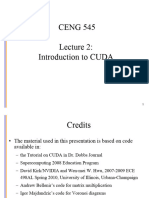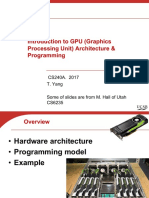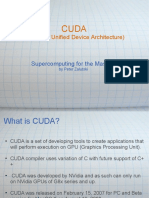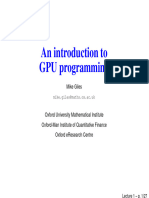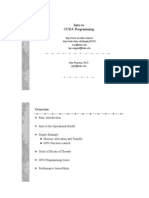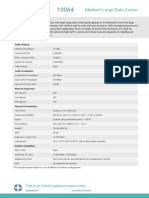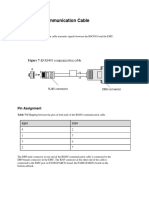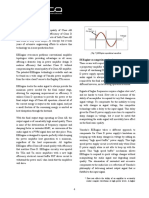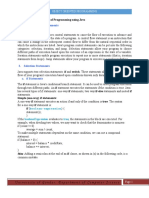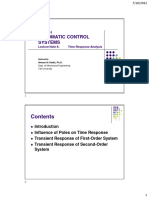0% found this document useful (0 votes)
26 views45 pagesChapter7 GPU
Chapter 6 discusses GPU and CUDA programming, explaining the architecture and functionality of GPUs, including their evolution from graphics rendering to applications in machine learning. It details the CUDA programming model, which allows developers to write parallel computing applications that leverage GPU capabilities, and outlines the steps for setting up a CUDA program. Additionally, the chapter covers parallelization strategies for neural networks, emphasizing data and model parallelism for efficient training on multiple GPUs.
Uploaded by
obadahabuodehCopyright
© © All Rights Reserved
We take content rights seriously. If you suspect this is your content, claim it here.
Available Formats
Download as PDF, TXT or read online on Scribd
0% found this document useful (0 votes)
26 views45 pagesChapter7 GPU
Chapter 6 discusses GPU and CUDA programming, explaining the architecture and functionality of GPUs, including their evolution from graphics rendering to applications in machine learning. It details the CUDA programming model, which allows developers to write parallel computing applications that leverage GPU capabilities, and outlines the steps for setting up a CUDA program. Additionally, the chapter covers parallelization strategies for neural networks, emphasizing data and model parallelism for efficient training on multiple GPUs.
Uploaded by
obadahabuodehCopyright
© © All Rights Reserved
We take content rights seriously. If you suspect this is your content, claim it here.
Available Formats
Download as PDF, TXT or read online on Scribd
/ 45

